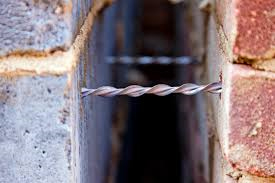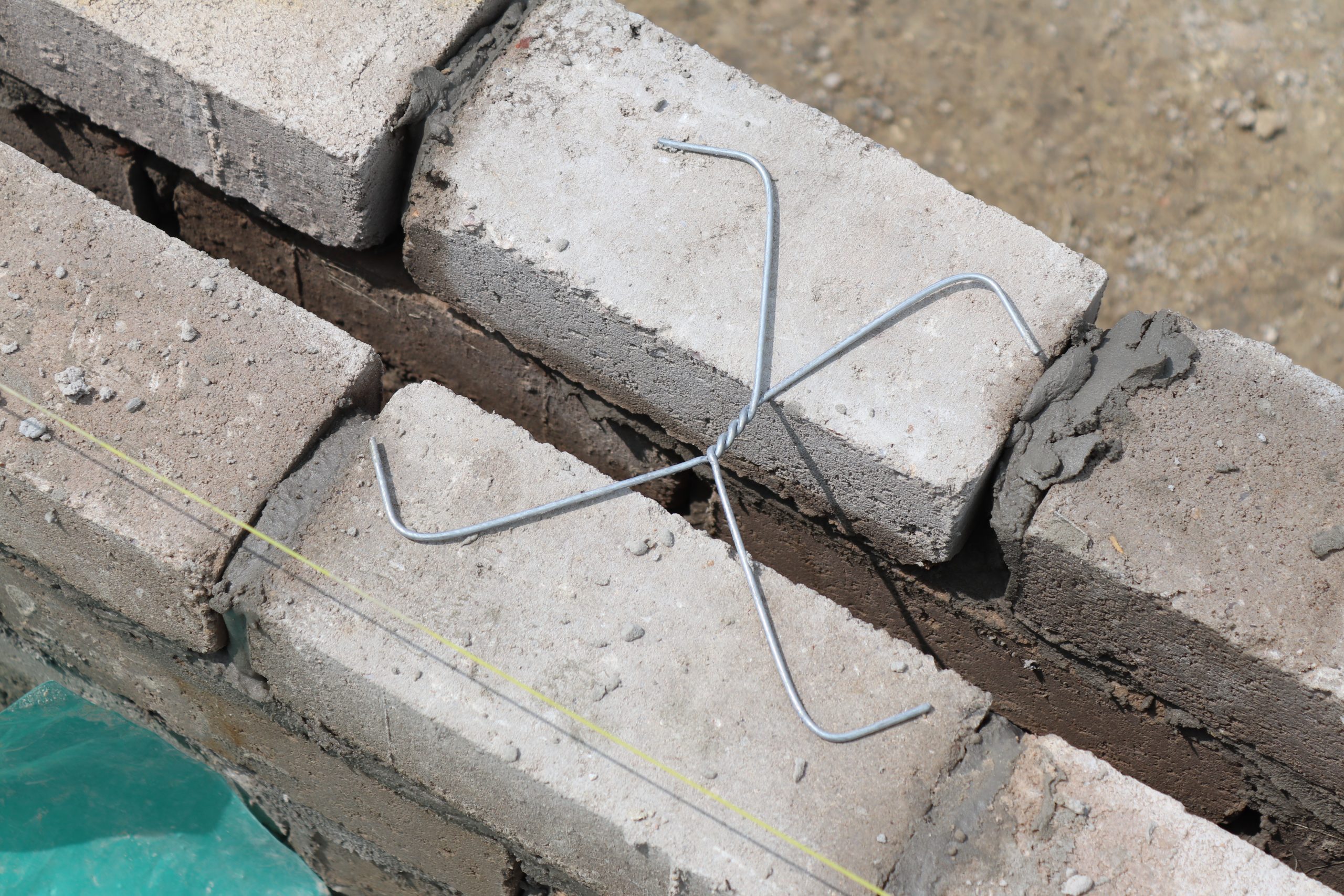An Expert Guide from Chartered Surveyors
Cavity wall ties are a crucial yet often overlooked component of many homes built in the UK since the early 20th century. They are small but vital elements that ensure your property’s walls remain strong, stable, and safe. Without them, the two layers of your cavity wall would not be securely connected, which could lead to structural movement, cracks, and even dangerous instability.
At Surveying Cymru, our Chartered Surveyors work with homeowners, buyers, and property managers to inspect, assess, and, if needed, recommend replacement of cavity wall ties.
This guide explains exactly what cavity wall ties are, why they matter, common problems to look out for, and how professional inspection and replacement works.

Understanding Cavity Wall Ties
The Purpose of Cavity Wall Ties in Modern Construction
In a cavity wall, two separate walls known as the inner leaf and outer leaf are built with a gap (or cavity) between them. This cavity helps improve insulation and reduces moisture transfer. Cavity wall ties act as connectors, holding the two walls together so they work as one solid structure.
How Cavity Wall Ties Work
The ties are embedded into the mortar joints of both walls, spaced evenly throughout. They transfer structural loads from one wall leaf to the other, preventing separation and instability.
Types of Cavity Wall Ties
There are several types, each designed for different construction styles and conditions:
- Galvanised – Common in older properties but prone to corrosion over time.
- Stainless steel – Highly resistant to rust and the preferred choice in modern installations.
- Remedial – Specially designed for retrofitting when existing ties have failed.
Why Cavity Wall Ties Are Important
Structural Stability and Safety
Without effective wall ties, the outer leaf of your wall can start to bulge or collapse, particularly under wind load.
Preventing Moisture Transfer Between Walls
Wall ties help stop moisture from crossing the cavity. They have a drip feature that directs water away from the inner wall.
Supporting Energy Efficiency
By keeping the two walls aligned and properly spaced, cavity wall ties help maintain the insulation properties of your home.
Common Issues with Cavity Wall Ties
Corrosion and Rust Damage
Older galvanised steel wall ties can corrode over time, especially in coastal or exposed locations. Rust expands the metal, creating cracks in the surrounding mortar and brickwork.
Poor Installation or Inadequate Spacing
Incorrectly installed ties can fail prematurely or leave parts of the wall unsupported.
Signs Your Wall Ties May Have Failed
- Horizontal or stepped cracks in mortar joints
- Bulging or bowing walls
- Rust-coloured stains on brickwork
- Loose or unstable masonry
If you notice these signs, you should arrange an inspection by a Chartered Surveyor without delay.
How Chartered Surveyors Inspect Cavity Wall Ties
Non-Invasive Survey Techniques
We start with a visual inspection to spot any external symptoms of wall tie failure.
Using Borescope Cameras and Metal Detectors
Specialist equipment allows us to locate and examine wall ties without removing large sections of brickwork. A borescope camera can be inserted through a small drill hole to inspect the tie’s condition.
Producing a Professional Condition Report
Our inspection concludes with a detailed written report, including:
- Photographs of wall tie locations and condition
- Assessment of overall stability
- Recommendations for repair or replacement
- Cost estimates for remedial work if required
Cavity Wall Tie Replacement and Installation
When Replacement Is Necessary
Cavity Wall Replacement is needed when ties are missing, heavily corroded, broken, or incorrectly installed.
The Installation Process Step-by-Step
- Identify existing tie positions using a metal detector
- Drill small access holes to remove or isolate failed ties
- Install new stainless steel wall ties in accordance with current building regulations
- Make good the brickwork to blend with the original appearance
Choosing the Right Wall Tie Material
We recommend stainless steel wall ties for their durability and corrosion resistance, ensuring a long-lasting solution.
Why Choose Surveying Cymru
Local Expertise Across South Wales, Gloucestershire, and Herefordshire
Our knowledge of local building types and common structural issues means we can diagnose problems quickly and accurately.
Fully Qualified Chartered Surveyors
As RICS-regulated professionals, we meet the highest standards for accuracy, impartiality, and professionalism.
Detailed Reports and Transparent Pricing
We provide clear, easy-to-understand reports and upfront costs before any work begins.
Frequently Asked Questions About Cavity Wall Ties
What exactly is a cavity wall tie?
A cavity wall tie is a metal connector that joins the inner and outer layers of a cavity wall, providing structural stability.
Galvanised steel ties typically last 25–50 years, while stainless steel ties can last significantly longer.
Common signs include horizontal cracks in brickwork, bulging walls, and rust stains.
Generally, failed wall ties are replaced with new stainless steel ties to ensure long-term performance.
Book Your Cavity Wall Tie Survey Today
If you suspect your cavity wall ties have failed, or you simply want peace of mind, Surveying Cymru can help. Our expert Chartered Surveyors provide accurate inspections, clear reports, and professional replacement services to keep your home safe and secure.
Call: 01600 715350 Email: nick@surveyingcymru.co.uk
